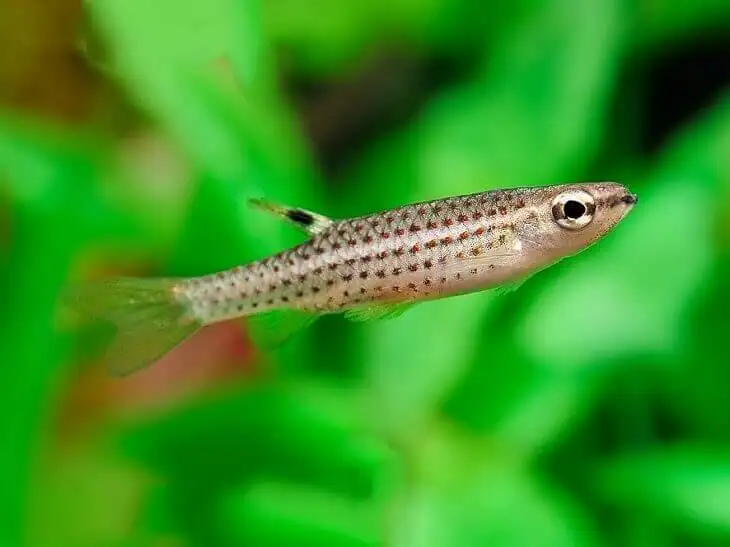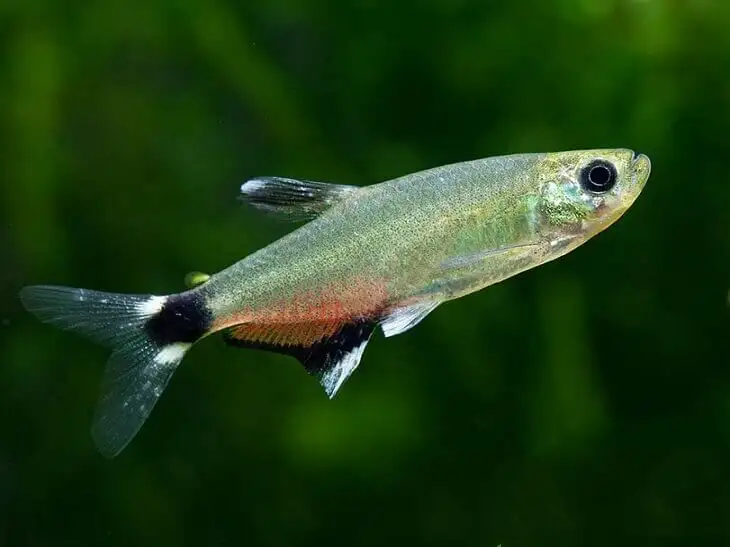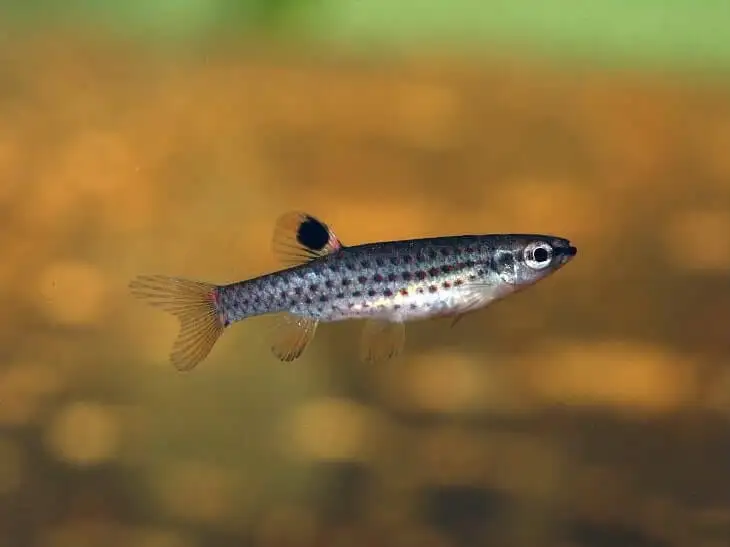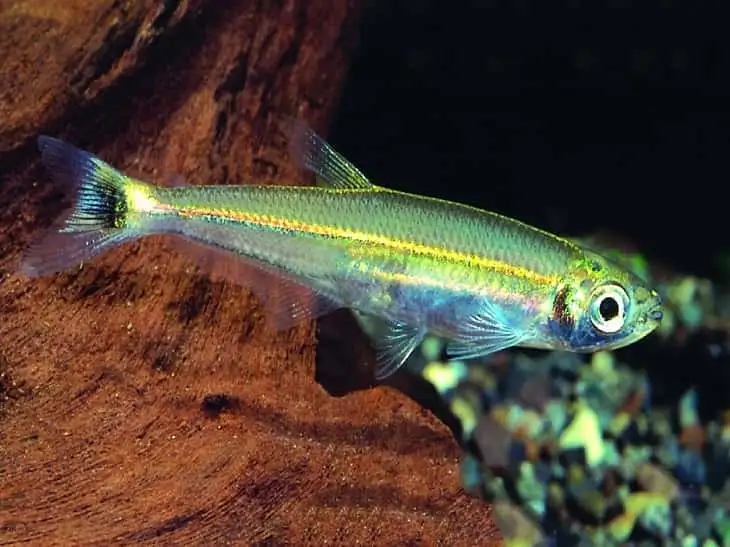Copella nattereri

Copella nattereri or Copeina natterera is widespread in the middle and upper Amazon basin, including its main tributaries in Brazil and Peru. The main aggregation of fish is observed in forest channels and flooded forests during the rainy season, in the shade of overhanging riparian vegetation over the water. The water in these areas is brownish in colour due to organic matter decomposing on the bottom.
Copella nattereri has an elongated silvery body with a dark longitudinal stripe with a red mottle on top. Males are more brightly colored than females and also larger, with elongated fins. The maximum size of the fish is 4-4.5 cm.
Copella nattereri is a peaceful fish. Keep these fish preferably in a flock of at least 8-10 fish in an aquarium of 50 liters. In this case, the behavior of fish will be more natural, and males in the process of competing with each other for the attention of females will show fascinating behavior. The fish mainly occupy the upper layer of water.
The aquarium should be densely planted with various tall plants, including those floating on the water surface. It is then possible to keep the fish in the same aquarium where they permanently live - plants provide good cover for the fry. Pre-dried oak or beech leaves should preferably be littered at the bottom. This substrate not only imitates natural fish conditions as much as possible, but also various micro organisms, which provide good supplemental food for the fish, multiply during the decomposition process.
Water parameters: temperature 20-28° C, hardness dH 1-9°, pH 4.0-7.0. Requires aeration, filtration and a weekly change of 1/3 of the aquarium water with fresh. A small water current should be created in the upper water layer of the aquarium. Do not launch fish in an aquarium where the biological equilibrium has not yet been established, as they are very sensitive to fluctuations in water chemistry.
In nature, Copella nattereri feeds on zooplankton and small invertebrates. In the aquarium, a variety of dry foodstuffs is the main food. They are also fed with live and frozen food such as daphnia, artemia, small moths, crickets and drosophila flies. Feed the fish once or twice a day.
Reproduction
During the spawning period, the horizontal dark band on the body of males becomes pale or disappears altogether, while the red mottle becomes significantly brighter.
Copella nattereri lays eggs among the leaves of plants, then the female leaves the spawning site and the clutch is left to care for the male. In a shared aquarium fry can appear without your intervention, but if there is a desire to preserve their stock, it is more preferable to use a spawning tank for this purpose.
Before spawning, the males occupy a small area where they attract one of the females. The eggs are incubated for 36-72 hours. Once the fry will turn out the male should be removed, otherwise he does not mind gorging himself on his young.
The fry are fed with special dry food intended for fish fry in the first days of their lives, and later, with artemia, when they are large enough to accept them. Feed the fry 3-4 times a day.
The life expectancy of Copella nattereri under aquarium conditions is about 4-5 years.






